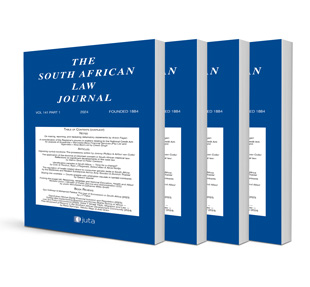
The Interpretation and Identification of International Law in South African Courts
Authors Dire Tladi
ISSN: 1996-2177
Affiliations: Professor of International Law, University of Pretoria
Source: South African Law Journal, Volume 135 Number 4, p. 703 – 736
Abstract
South Africa has a constitution that has been described, correctly, as an ‘international law-friendly’ constitution. In the landmark decision in S v Makwanyane, the Constitutional Court went to great lengths to show the court’s openness to international law by, inter alia, declaring that the Constitution’s reference to international law included both binding and non-binding international law. Yet the use of, and openness to, international law by South African courts does not tell us about the approach to the identification and interpretation of international law. In other words, the Constitution’s openness to international law presupposes an ascertainment of the content of international law, either through identification or interpretation. But are South African courts able to use techniques, tools and methodology of international law to give content to it? The purpose of this article is to consider this question. It considers this question through an analysis of the decisions of South African courts relying on international law, particularly those of the Constitutional Court. It looks at both old and new cases to make a determination about the extent to which South African courts are faithful to the techniques, tools and methodologies to identify and interpret international law.